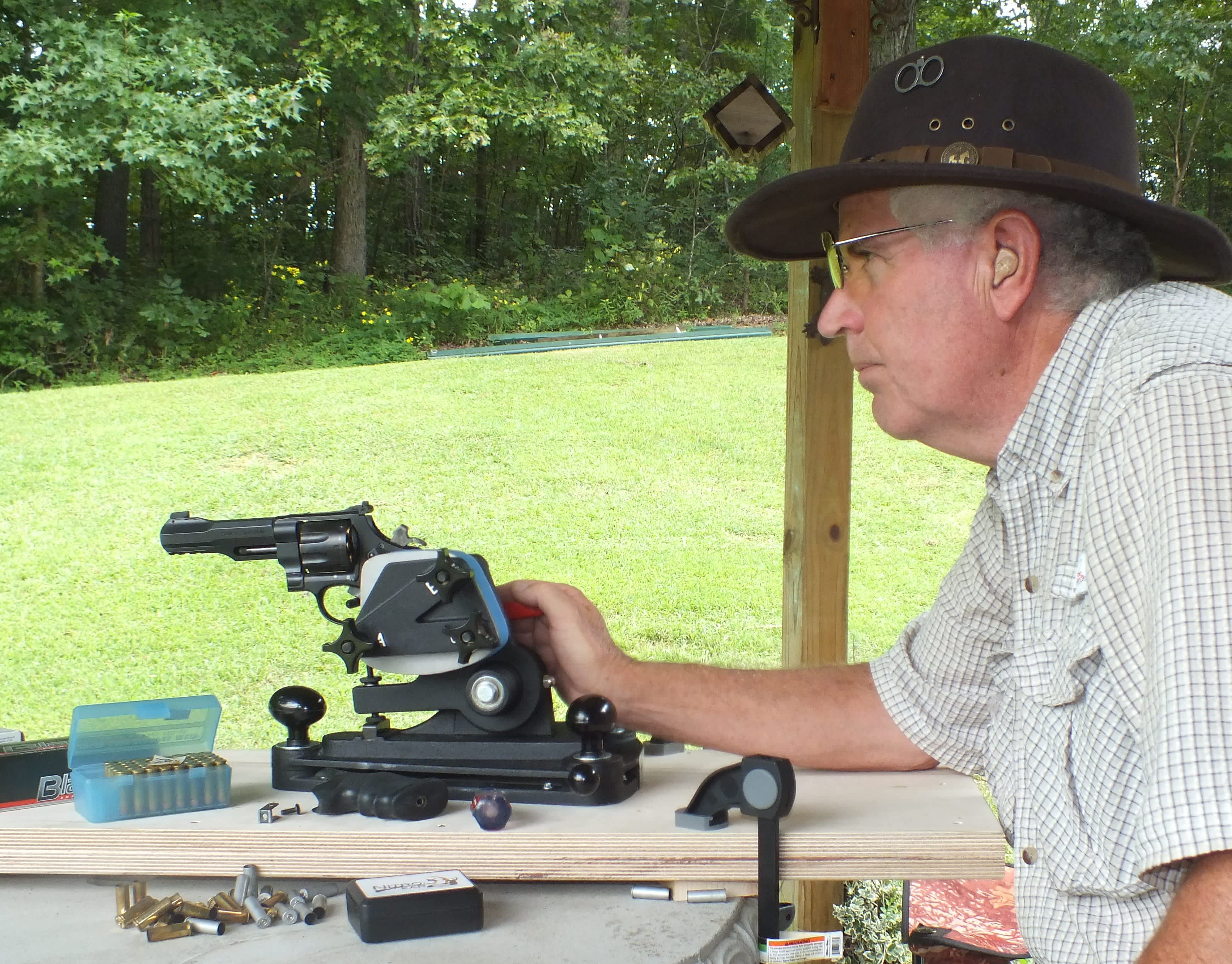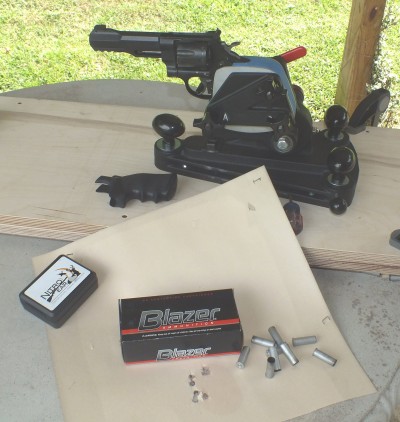Ransom Master Series Rest: The Ultimate Device for Handgun Testing
Lewis Creek Shooting School 09.12.13

As much as I’d like to be, I’m not perfect. Neither are you. Other than the times when my wife’s ability to point out my imperfections is employed to full effect, I’m most aware of my shortcomings when I try to assess the accuracy potential of a handgun. While it’s true that most gun writers can’t shoot, I shoot fairly well for a gun writer. I can test a rifle and feel I’ve done a reasonable job because I can almost always put a scope on the rifle and shoot it off a benchrest. By removing the error in seeing iron sights by installing a scope and preventing the error of gun movement by resting the gun on a Lead Sled, I’ve eliminated most of the human error and can truly evaluate a rifle’s level of accuracy.
Until recently, I hadn’t made a big issue of the ultimate potential accuracy of handguns I test because I know I can’t shoot any handgun with iron sights to its full potential. My need for reliable accuracy testing isn’t unique. Gunsmiths have similar needs, and competitive shooters would all benefit from knowing just which gun or load is better when the “skill of the shooter” variable is controlled for.
In the ’60s, the folks at Ransom International recognized this need and did something about it. They developed the Ransom Master Series Rest, an accuracy-testing machine that allows anyone to test a handgun to its full potential. Contrary to what some believe, you can’t simply put a gun in a vise and shoot it into a target. The forces of recoil on any gun larger than a rimfire would either damage the gun or move it in the vise. To test a mounted gun, it must be able to react to the recoil. Adding to that, an effective testing tool must also be able to accommodate most any type of handgun.
The Ransom Rest uses a clamshell mounting system that fits a variety of grip adapters specifically fitted for certain handgun models (sold separately). The grip adapters are high-density rubber with an aluminum backing plate. They’re molded to exactly fit the frame of the gun. The grips are removed from the gun and the clamshell fits over the grip frame. The clamshell is tightened in sequence and the gun is ready to be loaded and fired.

To handle recoil, Ransom developed a pivot system that mimics the movement of a shooter’s wrist. When the gun fires, it pivots from the bottom of the grip upward against a clutch system that limits travel. The tester then pushes the gun back down to the battery position and fires another shot. Other than using the sights to get the first shot on paper, there is no need to even look at the sights or have an aiming point on the target. The trigger is also operated by the system eliminating the need for the shooter to come in contact with the gun during firing.
Of course, for this to happen, you have to have a solid table or bench to mount the rest to and your target also has to be stable. I used a concrete table I use as a benchrest for testing out to 50 yards. The instructions are very specific about mounting the unit, since any movement defeats the purpose of the test.
The beauty of this is the elimination of any variations from the tester. Out of curiosity, I decided to test some CCI Blaser .38 Special. This is among the cheapest brand-name .38 Special ammunition on the market, and I wondered about the accuracy potential. I used a S&W R8 revolver that my wife, Cherie, used in this year’s Bianchi Cup. The R8 is an out-of-the-box competition gun and I was surprised and pleased with the results—a 1.622-inch group at 25 yards. The ability to accurately test ammunition can save you hundreds of dollars, provided you find an accurate low-cost load. Maybe the Ransom Rest isn’t for everyone, but it certainly is a useful addition to my ability to evaluate guns. My future tests will reflect the real numbers on accuracy and I see this as a real plus.

